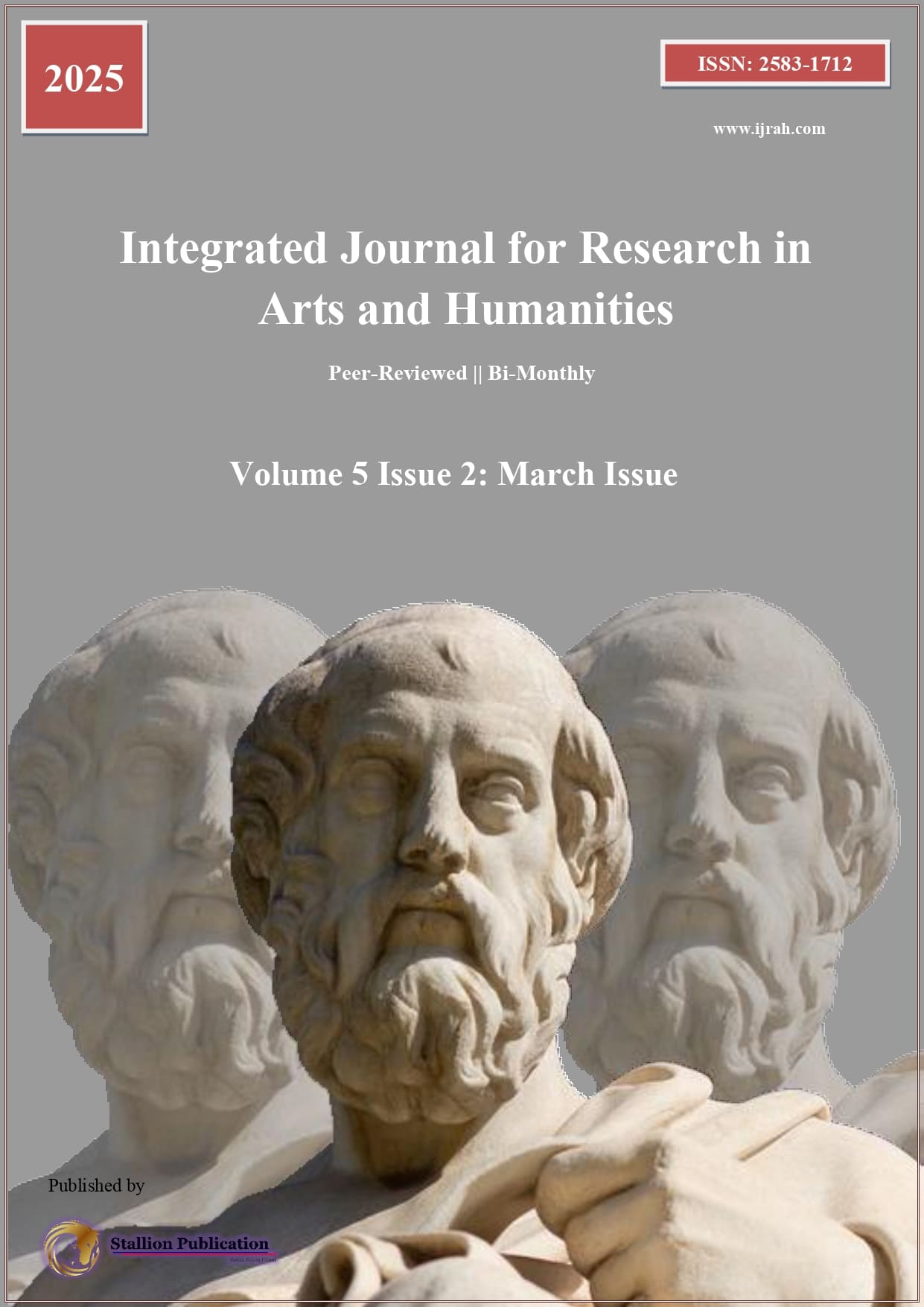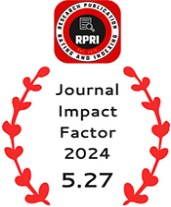The Main Characteristics of China’s Foreign Policy towards Afghanistan Since 2001 to 2020
DOI:
https://doi.org/10.55544/ijrah.5.2.26Keywords:
China, Afghanistan, Relation, policy, governmentAbstract
Historically, the Sino-Afghan relationship date back to the 6th century, but the official relations between China-Afghanistan have been going on for more than half a century. According to Afghanistan situations, China has been different policy towards Afghanistan such as Afghanistan's support against Soviet Union occupation and the withdrawal of the Chinese embassy from Kabul in 1993. according to Afghanistan's geo-economic and geopolitical location, the US and its allies did military-invasion in Afghanistan in 2001 to eliminate terrorism. China was reopened its embassy in Kabul on 6 February 2002. China has been two kinds of foreign policy toward Afghanistan since 2001, such as "Neutral Policy" and "relatively active policy" since 2014. Basically, the main characteristics of China's foreign policy towards Afghanistan is respect to Afghanistan's independence, anti-hegemony, non-military aggression, and pursuing security in the beam of economic cooperation and its main goals is security, economy, cultural factors and China’s strategic goals.
This paper attempts to find the answer to this research question; What are the Characteristics of China’s Foreign Policy towards Afghanistan Since 2001 to 2020? drawing on library sources and other reference materials for analysis.
Downloads
Metrics
References
Ambrish, Dhaka, "Factoring Central Asia into China’s Afghanistan Policy," Journal of Eurasian Studies (2013): pp. 2-3.
Anthony Kuhn, "China Becomes a Player in Afghanistan's Future," NRP (October 21, 2009), accessed September 19, 2020 from https://www.npr.org/templates/story/story.php?storyId=113967842.
Ankit Panda, "Afghanistan and China Open a New Chapter," the diplomat (29 October 2014): accessed September 20, 2020 from http://thediplomat.com/2014/10/afghanistan-andchina-open-a-new-chapter
Abdullah, “The American War in Afghanistan 2001-2016,” Nunn.asia (October 17, 2016) accessed on February 15, 2020 from https://www.nunn.asia/85665.
Afghan Voice Agency (AVA), “Chinese Ambassador: we are ready to cooperate with Banyan Province in the fields of agriculture and protection of Cultural heritage,” (March 27, 2018) accessed on October 25, 2020 from https://www.avapress.com/fa/news/160667.
Beijing Declaration, “Heart of Asia Istanbul Process: Deepening Cooperation for Sustainable Security and Prosperity of the Heart Asia Region,” Beijing Declaration (31 Oct. 2014): pp. 1-7.
Christina Lin, "China’s Silk Road Strategy in “AfPak”: The Shanghai Cooperation Organization", ISPSW (2011): p. 5.
Chad Garland, “New rail route to China carries hope for Afghan economy,” Chad Garland/ Stars and Stripes (September 7, 2016), accessed September 26, 2020 from Chad Garland, “New rail route to China carries hope for Afghan economy,” Chad Garland/ Stars and Stripes (September 7, 2016), accessed September 26, 2020 from https://www.stripes.com/news/new-rail-route-to-china-carries-hope-for-afghan-economy-1.42767.
Erica Downs, “China Buys into Afghanistan,” SAIS Review Vol. XXXII NO. 2 (Summer-Fall 2012): pp. 65-67.
Harsh V. Pant, "India in Afghanistan: A Test Case for a Rising Power,” Contemporary South Asia, Vol.18. Issue. 2 (June 23, 2010): p. 141.
Ibrahimi Yaqub, “The Soviet Invasion of Afghanistan and the Dream of Hot Water: Tow Irrelevant Phenomena,” 8AM (December 28, 2019) accessed on February 13, 2021 from https://8am.af/soviet-invasion-of-afghanistan-and-the-dream-of-hot-water-two-irrelevant-phenomena/.
Kitabi Mahmoud, “Explain the Strategic Relations between China-Pakistan,” Journal of World Politics, Vol. 5, No. 1 (Summer of 2016): pp. 13-14.
Li Keqiang, “The Fourth Foreign Ministerial Conference of the Istanbul Process on Afghanistan Held in Beijing.” Ministry of Foreign Affairs of People’s Republic of China (November 1, 2014): p. 1.
Mahdi Samiullah, “China’s policy towards Afghanistan: from calculated indifference to strategic engagement,” Etilaatroz (May 5, 2020) accessed on February 16, 2021 from https://www.etilaatroz.com/97784/china-towards-afghanistan-from-accounted-indifference-to-strategic-interaction/
Raja, Muhammad Khan, “China's Economic and Strategic Interests in Afghanistan,” FWU Journal of Social Sciences, Special Issue, Vol.1, No.1, (Summer 2015): pp. 4-7.
Sam Gollob Michael E. O’Hanlon, “Afghanistan Index, Tracking Variables of Reconstruction and Security in Post-9/11 Afghanistan,” Foreign Policy at Bookings (August 2020): p. 9.
Shafiyee, Nawzer, “Explicating of China’s New Neighborhood Diplomacy in Afghanistan,” Central Asia and Caucasus Quarterly, No. 94 (June 23, 2016): p. 85.
Sharany, Wahidullah, “Afghanistan and China sign agreement to extract Amu Darya oil,” (October 23, 2011), accessed September 26, 2020 from https://www.dw.com/افغانستان-وچین-قرارداد-استخراج-نفت-آمو-دریا-را-امضا-کردند /a- 15632062.
Thomas Waldman, "Reconciliation and Research in Afghanistan: An Analytical Narrative," International Affairs, No. 90: 5 (September 2014): p. 1049.
TOLO “Ghani meets with China’s Army Chief of Staff in Kabul,” (March 1, 2016), accessed September 20, 2020 from https://tolonews.com/pa/media/11369.
Valdani, Asghar Jafari, “China’s Strategic Culture and Behavior in International Crisis Management (Case Study of the Syrian Crisis,” Quarterly Journal of Strategic Policy Research, Vol. 2, Issue. 6, No. 6 (Summer of 2013): p. 171.
Zhu Yongbiao, “China's Afghanistan Policy since9/11. Stages and Prospects”, Asian Survey 58: 2 (2018): p. 281.
Zhao Huasheng, “China and Afghanistan: China’s Interests, Stances, and Perspectives," Centre for Strategic and International Studies (March 2012): pp. 5-6.
Huasheng, “Powers Play on the Scene of Afghanistan: goals and patterns behavioral,” Magazine of Political Defensive, No. 40-41, (winter 2002 autumn and spring 2003): p. 7.
Zhao, Huasheng, "Afghanistan and China’s new neighborhood diplomacy," The Royal Institute of International Affairs, Volume 92, Issue 4 (June 20, 2016): p. 894.
Downloads
Published
How to Cite
Issue
Section
License
Copyright (c) 2025 Mosa Lali, Mehrjan Raufi

This work is licensed under a Creative Commons Attribution-NonCommercial-NoDerivatives 4.0 International License.

























